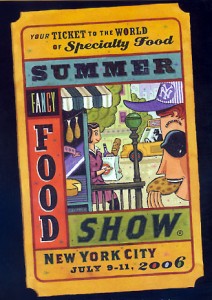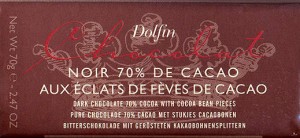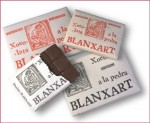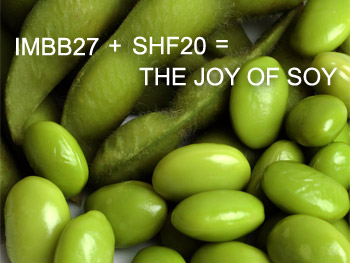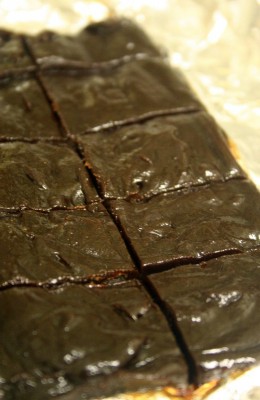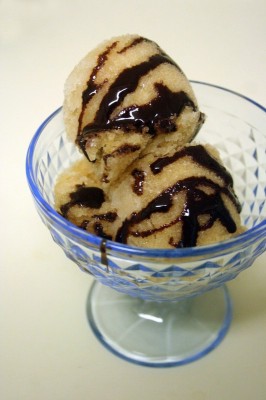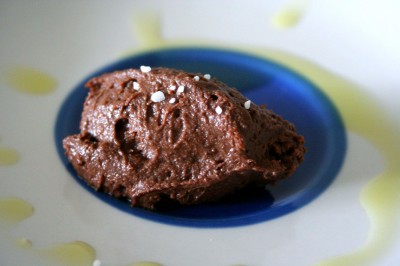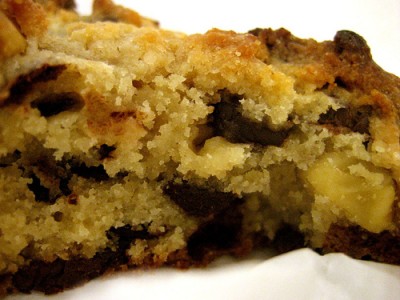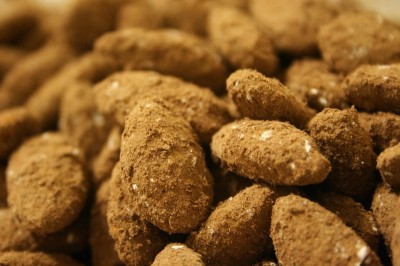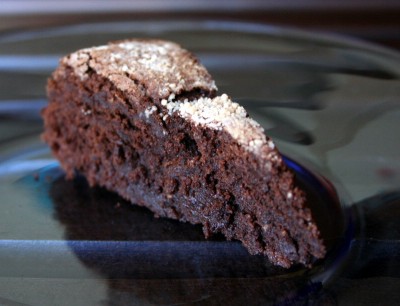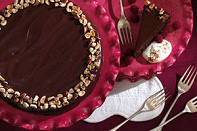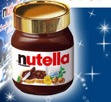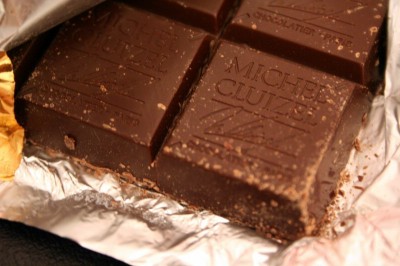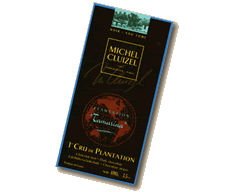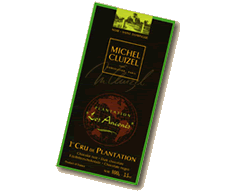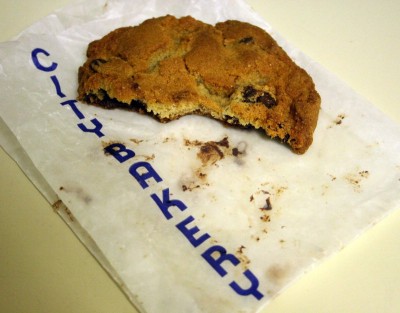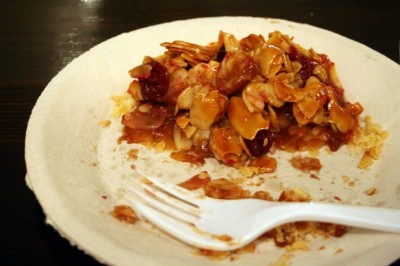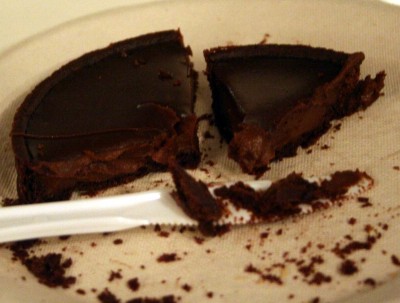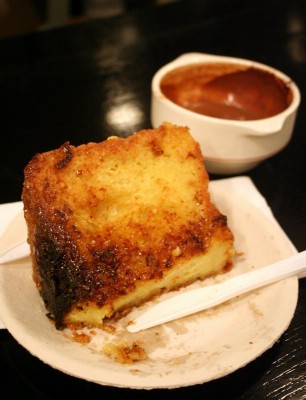Fancy Food Show 2006
Before food makes it to the supermarket, it’s displayed at the Fancy Food Show, an annual convention with endless tables of specialty foods. From July 9-11, the Jacob Javits Center in New York showcased 160,000 products from 2,200 exhibitors. An estimated 24,000 attendees, including retail store decision makers, distributors, caterers, chefs and media (yours truly) sought out the best gourmet products.
From the moment I saw the floorplan, I knew that this foodie’s paradise and dieter’s nightmare would be overwhelming. Booths are not grouped by category, so you can eat a chocolate truffle before you get a bowl of pasta and bump into a mascot handing out hot sauce. (For all of you who make meals out of Costco samples, you can can do the same here, but you’ll hear from your stomach later.) If you’re lucky, booths were organized by country and state, but most were randomly strewn throughout 300,000 square feet.
I don’t mean to stereotype, but Italy focused on olive oil, cured meat and cheese; Germany had sausage and bulky grain products; England had shortbread and greasy food; Texas had lots of beef and spices; China had dehydrated vegetables to make your own cup-o-Noodles; and middle Eastern countries had dates.
As for general food trends, there were lots of fruit pastes (like sliceable jam) with nuts, gourmet bake-at-home mixes for molten chocolate cake and creme brulee (It’s ironic that anyone who makes creme brulee needs a blow torch or a broiler. Anyone that serious about food probably wouldn’t bake with mixes.), alternative natural sweeteners (Mostly in the form of agave nectar and honey. I was disappointed that molasses, date sugar, evaporated cane juice, stevia, and fruit juice concentrate, etc. didn’t make a mark.)
In chocolate trends, cacao nibs were popular. Nibs are plain cacao beans; once sugar, cocoa butter, vanilla and lecithin are blended in, it becomes chocolate. In the words of chocolate expert David Lebovitz, “The term ‘cacao’ refers to the beans used to make chocolate, and ‘cocoa’ usually refers to the powder made from the beans after they’re roasted and pulverized.” Also, prominently labeled single-origin chocolate was abundant. It’s not enough to know about cocoa percentage anymore; the country of the beans can indicate their taste. To see how Venezuelan v. Santo Domingo beans taste different, check out my Michel Cluizel chocolate review.
There was a dismal attempt at whole-grain products. Most were rock hard and tasted like medicine that your doctor would prescribe. Others, like Milton’s multi-grain cracker squares, were tasty but relied on enriched wheat flour (a euphemism for bleached white flour—you don’t need to enrich something if its nutrients are intact) and had the same nutrition as Cheez-its. As a whole, the grains didn’t fall far from the tree. Familiar grains like whole-wheat flour, oats, corn, rice, sesame and flax were staples, but kamut, spelt, millet and quinoa were virtually non-existent from the show.
After sampling hundreds of products to the point where everything tasted the same and I could no longer talk in straight sentences, the best products became apparent. If you ever go, pace yourself and be selective before tasting the overabundant olive oils, olives, sauces, cheese, and preserves. It helps if you bring a friend or randomly bump into one, such as Gerald from Foodite.
Following 101 Cookbooks’ lead, here’s my personal Best in Show. Look for these products in specialty food stores like Whole Foods, Dean & Deluca, Zabar’s and Fairway.
Chocolate
I’m breaking products down by category, so why not start with my favorite food?
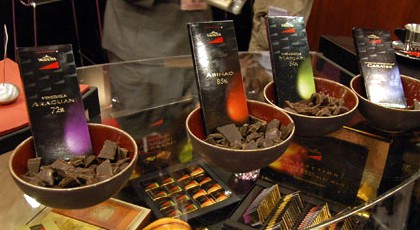
Photo: Foodite
Valrhona
Best chocolate
Every time I try a different brand of chocolate, I always come back to Valrhona. The flavor is unparalleled: complex, rich but never bitter. Out of all the flavors at the show, I liked the Manjari the best, which Valrhona describes as “A highly aromatic bouquet, 64% cocoa. Made from Criollos and Trinitarios beans from Madagascar. A distinctive chocolate flavour with an intense bouquet of red berries.” The 72% Araguani and 85% Abinao were perfectly palatable, but I prefer a little more sugar in my chocolate.
Dolfin
Best chocolate runner-up
Dolfin comes at a close second behind Valrhona. I usually associate Belgian chocolate with mildness. Pure Belgian chocolate, like Callebaut, has a weak aroma and bland taste. Begian-style truffles from Neuhaus and Leonida’s are heavy on the dairy. Dolfin, however, is wonderfully nuanced. I love their dark chocolate bars with crunchy cacao nibs.
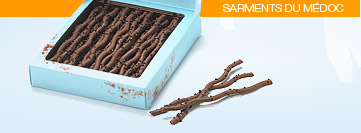
Photo: Mademoiselle de Margaux
Mademoiselle de Margaux
Best shaped chocolate: Sarments du medoc
Elegant packaging and presentation aside, Mademoiselle de Margaux makes tasty chocolate twigs that are perfect for nibbling. They come in natural tasting dark chocolate, orange, lemon, mint, raspberry, coffee, toffee and hazelnut flavors.
Monbana
Best cocoa
When I visited France two years ago, I smuggled their hot cocoa mix so I could savor it back home. From the looks of it, the Chocolate Powder mix contains natural cocoa and raw sugar. Even if mixed with water instead of milk, it tastes as rich as hot chocolate. They had distribution problems in the U.S. before, but they plan to get off the ground soon.
Photo: Monbana
Chocolats Olivier
Most potential
The oldest chocolatier in France (open since in 1780 during King Louis XVI’s rein), Chocolats Olivier recently acquired new ownership. They feature single-origin chocolate and truffles. The chocolate in their chocolate-covered raspberry jelly was forgettable, but the jelly tasted fresh and was full of seeds. When they sort things out, I think they’ll be really promising.
Chocolat Moderne
Best truffles
Chocolat Moderne is a nouveau chocolatier that gets its flavors right. Even under the melting heat of the display, the chocolate-covered grapefruit caramels and lychee truffle with crunchy pralines tasted bright. These chocolates were just as delicious as they looked. They were much better than their more famous competitor, Vosges Haut Chocolate, whose chocolate didn’t taste anything like its advertised flavors of curry or pandan. However, it is with great reservation that I recommend Chocolat Moderne, since the gentleman at the booth snubbed me. He tried to convince me that he had no samples available, although I saw the people before and after me grab from the prominent tray of truffles. Later on, I discovered samples at the Focused Tasting area.
Photo: Chocolat Moderne
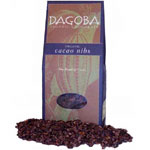 Dagoba
Dagoba
Outstanding organic chocolate
If you’re into conscientious eating, check out Dagoba’s certified organic chocolate. Other organic brands, like Divine Chocolate, are crumbly, and Endangered Species has a lingering malty sweetness. Dagoba chocolate doesn’t suffer from these pitfalls, and it comes in unique flavors such as xocolatl (with chilies, spices and cacao nibs). Having things labeled organic and fair trade is a plus, but I think they can be redundant if you already seek out artisan chocolate. Good cacao beans come from small farmers who care about the crop and already take care of their land. Some chocolate makers, such as El Rey and Jacques Torres, deliberately avoid becoming certified because they think the system is flawed. Big corporations can afford certification, which defeats the purpose of supporting the small artisans.
Dagoba also makes one of my favorite chocolate-covered cacao nibs. They resemble rice krispies in size and texture, and each one tastes slightly different, keeping your tastebuds guessing. There is actually one brand that makes better nibs, but I had such a bad personal experience with the owner that I want to boycott their products.
Photo: Dagoba
Blanxart
Best rustic chocolate
This Barcelona chocolatier leaves the cacao beans chunky and uses coarse sugar. The chocolate-covered hazelnut nougat is also very good.
Photo: Blanxart
Coming up in parts two and three: the remaining Best in Show and behind the scenes at the Fancy Food Show.

